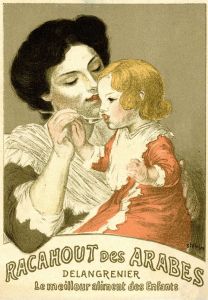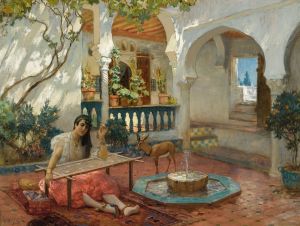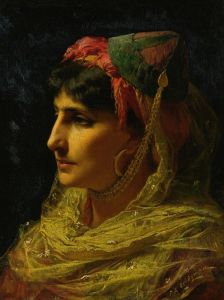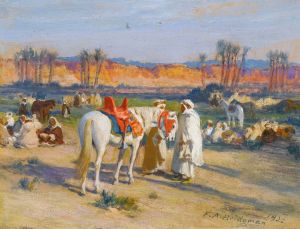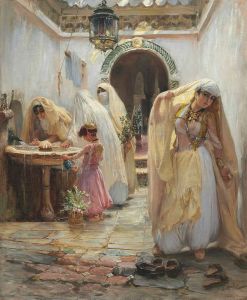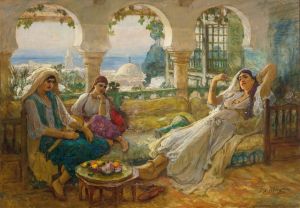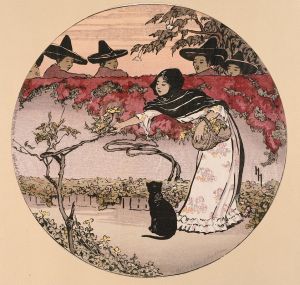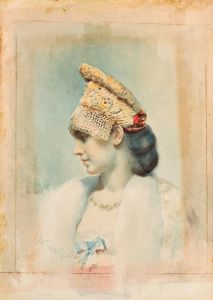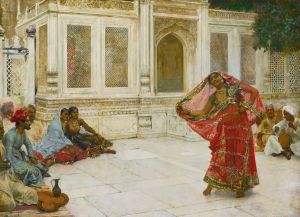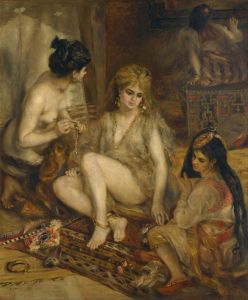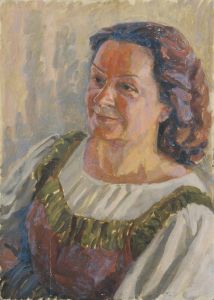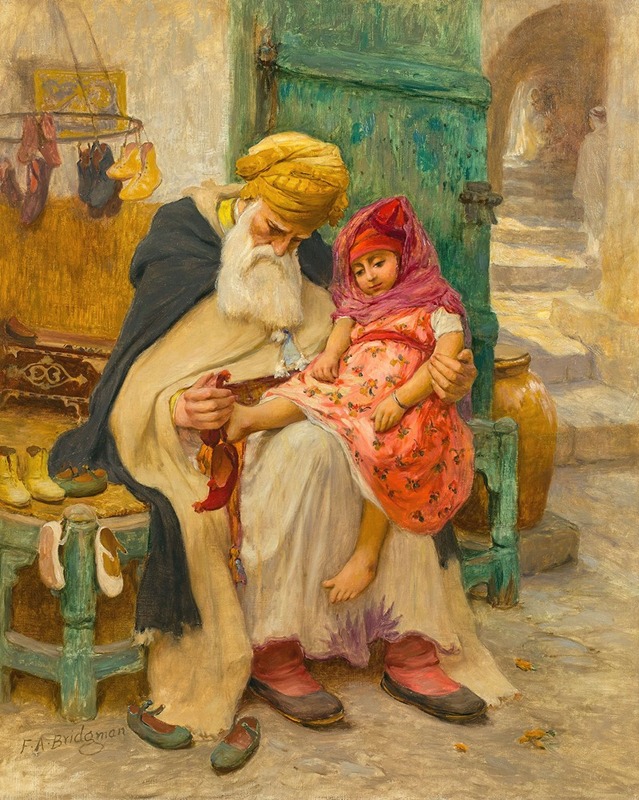
Les babouches
A hand-painted replica of Frederick Arthur Bridgman’s masterpiece Les babouches, meticulously crafted by professional artists to capture the true essence of the original. Each piece is created with museum-quality canvas and rare mineral pigments, carefully painted by experienced artists with delicate brushstrokes and rich, layered colors to perfectly recreate the texture of the original artwork. Unlike machine-printed reproductions, this hand-painted version brings the painting to life, infused with the artist’s emotions and skill in every stroke. Whether for personal collection or home decoration, it instantly elevates the artistic atmosphere of any space.
Frederick Arthur Bridgman was an American artist known for his Orientalist paintings, which often depicted scenes from North Africa and the Middle East. Born in Tuskegee, Alabama, in 1847, Bridgman moved to Paris in 1866 to study art, where he became associated with the Orientalist movement. His works are characterized by their detailed and romanticized portrayals of exotic locales and peoples, reflecting the Western fascination with the East during the 19th century.
"Les Babouches" is one of Bridgman's notable works, although specific details about this painting are limited. The title "Les Babouches" translates to "The Slippers" in English, suggesting that the painting likely features or focuses on traditional footwear, which is a common element in Orientalist art. Babouches are a type of slipper traditionally worn in North Africa and the Middle East, often characterized by their soft leather and pointed toes. These slippers are not only functional but also hold cultural significance, often being intricately designed and indicative of the wearer's social status.
Bridgman's work often involved meticulous attention to detail and vibrant color palettes, capturing the textures and patterns of fabrics, architecture, and landscapes. His paintings frequently depicted everyday life, ceremonies, and the rich cultural tapestry of the regions he visited. Bridgman traveled extensively in North Africa, particularly in Egypt and Algeria, which provided him with firsthand experiences and inspiration for his art.
While specific information about "Les Babouches" is scarce, it can be inferred that the painting aligns with Bridgman's broader body of work, which sought to present an idealized vision of the Orient. His paintings were well-received in his time, appealing to Western audiences' curiosity and romantic notions about distant lands. Bridgman's art was part of a larger trend during the 19th century, where European and American artists depicted the East as a place of mystery, luxury, and timelessness.
Bridgman's Orientalist paintings, including "Les Babouches," contribute to the understanding of how Western artists perceived and represented Eastern cultures. While these works are celebrated for their artistic merit, they also reflect the complexities and biases of cultural representation during the colonial era. Today, Bridgman's paintings are appreciated for their beauty and craftsmanship, while also serving as historical documents that offer insight into the cultural dynamics of the 19th century.
Frederick Arthur Bridgman continued to paint and exhibit his work until his death in 1928. His legacy is preserved through his contributions to the Orientalist genre, with his paintings housed in various museums and private collections around the world. "Les Babouches," like many of his works, remains a testament to his skill and the enduring allure of his artistic vision.





